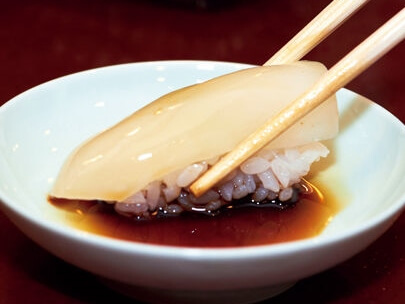 The difference between common people who eat this sauce and foodies is a delicate nose, meaning their sense of smell. This sense is acquired through childhood experiences and repetition after becoming an adult. Tasting through sense of smell is a person’s food culture. The reason that the so-called celebrities, or the upper class made through business success, don’t have an appreciation for high-class sushi restaurants is because they don’t have this culture of distinguishing by smell, or the culture of feeling the seasons. Also, in order to target the upper-middle class clientele, it is important to use strong flavors and give a performance that is easy to understand, while worrying about details is not necessary. That is why the obvious show of using a burner for searing is popular.
The difference between common people who eat this sauce and foodies is a delicate nose, meaning their sense of smell. This sense is acquired through childhood experiences and repetition after becoming an adult. Tasting through sense of smell is a person’s food culture. The reason that the so-called celebrities, or the upper class made through business success, don’t have an appreciation for high-class sushi restaurants is because they don’t have this culture of distinguishing by smell, or the culture of feeling the seasons. Also, in order to target the upper-middle class clientele, it is important to use strong flavors and give a performance that is easy to understand, while worrying about details is not necessary. That is why the obvious show of using a burner for searing is popular.
Related contents: SOY SAUCE FOR SUSHI
[sc_apply url=”https://sushiuniversity.jp/apply/”]
We hope this information will be helpful.

Revision date: June 4, 2019
Share this article
Option for pairing Japanese sake with sushi
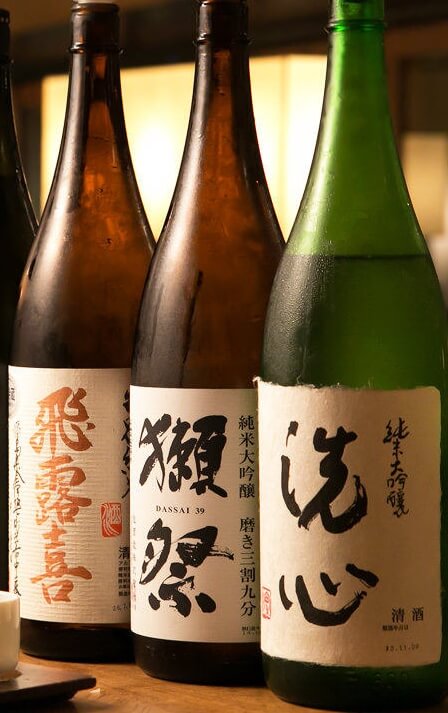 There is a theory that when pairing Japanese sake with cuisine, the two should complement each other. This means that one should complement the shortcomings of the other, and thus a harmony is achieved with the compatibility of the two pieces.
There is a theory that when pairing Japanese sake with cuisine, the two should complement each other. This means that one should complement the shortcomings of the other, and thus a harmony is achieved with the compatibility of the two pieces.
Of the five tastes, the components of sake include a balance of sweetness, umami, sourness, and bitterness. It is only missing the saltiness. However, sushi contains salt in the vinegar rice and topping, tacitly complementing sake. Sushi is delicious even eaten alone with its multi-layered umami components including acetic acid, glutamic acid and inosinic acid. By pairing with sake, you are adding the organic acids specific to sake, such as succinic acid, malic acid and lactic acid, further enhancing the taste experience.
Let’s discuss how science backs up drinking sake with sushi.
If you are looking for a new favorite sake, you should sample as many different types as you can. If that’s your aim, then filling your stomach with sushi is going to get in the way. The goal here is to ultimately find a sake that pairs well with sushi.
 First, you should ask for a small amount of Junmaishu and Ginjoshu (or Junmai-Ginjoshu) recommended by your sushi chef. See the sensation they create in your mouth, whether there is a sweetness or a dryness, and note the fragrance and acidity. Immediately after eating a piece of sushi, try tasting the sake. Your impression may change a lot when paired with the sushi compared to the first sip. This is the true pleasure of pairing sushi and sake.
First, you should ask for a small amount of Junmaishu and Ginjoshu (or Junmai-Ginjoshu) recommended by your sushi chef. See the sensation they create in your mouth, whether there is a sweetness or a dryness, and note the fragrance and acidity. Immediately after eating a piece of sushi, try tasting the sake. Your impression may change a lot when paired with the sushi compared to the first sip. This is the true pleasure of pairing sushi and sake.
[sc_apply url=”https://sushiuniversity.jp/apply/”]
Related contents:
We hope this information will be helpful.

Revision date: June 1, 2023
Share this article
It’s not just only farmed fish which has been accumulated toxic substances.
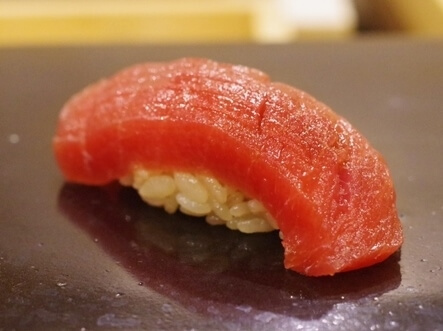 Natural fish are part of the food chain and have concentrations of harmful substances. Since 2000 the amount of mercury found in fish has become an issue. The American Natural Resources Defense Council has said tuna is a fish that should be avoided if pregnant or planning to get pregnant. A more recent problem is the large amounts of micro plastics found in fish meat. This shocking phenomenon will likely be reported by research organizations at some point in time. If it does reach that extreme, then it will be better to avoid the danger of eating fish.
Natural fish are part of the food chain and have concentrations of harmful substances. Since 2000 the amount of mercury found in fish has become an issue. The American Natural Resources Defense Council has said tuna is a fish that should be avoided if pregnant or planning to get pregnant. A more recent problem is the large amounts of micro plastics found in fish meat. This shocking phenomenon will likely be reported by research organizations at some point in time. If it does reach that extreme, then it will be better to avoid the danger of eating fish.
[sc_apply url=”https://sushiuniversity.jp/apply/”]
We hope this information will be helpful.

Revision date: April 22, 2019
Share this article
Why does it taste a little bland when you had tuna at high-class sushi restaurant?
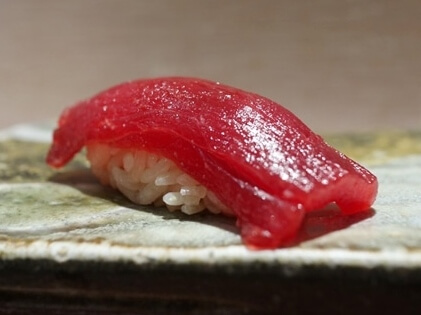 Tuna at top-end restaurants is light in flavor. Its Akami (red meat) has an indescribable acidity with a delicate harmony between the shari vinegar, the nikiri soy sauce, and wasabi. However, on the other side of the coin, it feels almost like a waste to eat it without a sense of luxury. Of course tuna with delicious akami, also has delicious fatty tuna (toro). And you’ll never get tired of it. It would be easy to polish off 10 pieces as a light snack. Contrary to popular belief, it’s not the high fat content that makes it so easy to eat. However, it is because of that popular belief that many people feel that the big chain store farmed fish with lots of fat is more delicious than luxury natural fish.
Tuna at top-end restaurants is light in flavor. Its Akami (red meat) has an indescribable acidity with a delicate harmony between the shari vinegar, the nikiri soy sauce, and wasabi. However, on the other side of the coin, it feels almost like a waste to eat it without a sense of luxury. Of course tuna with delicious akami, also has delicious fatty tuna (toro). And you’ll never get tired of it. It would be easy to polish off 10 pieces as a light snack. Contrary to popular belief, it’s not the high fat content that makes it so easy to eat. However, it is because of that popular belief that many people feel that the big chain store farmed fish with lots of fat is more delicious than luxury natural fish.
[sc_apply url=”https://sushiuniversity.jp/apply/”]
We hope this information will be helpful.

Revision date: April 16, 2019
Share this article
What is sushi connoisseur?!
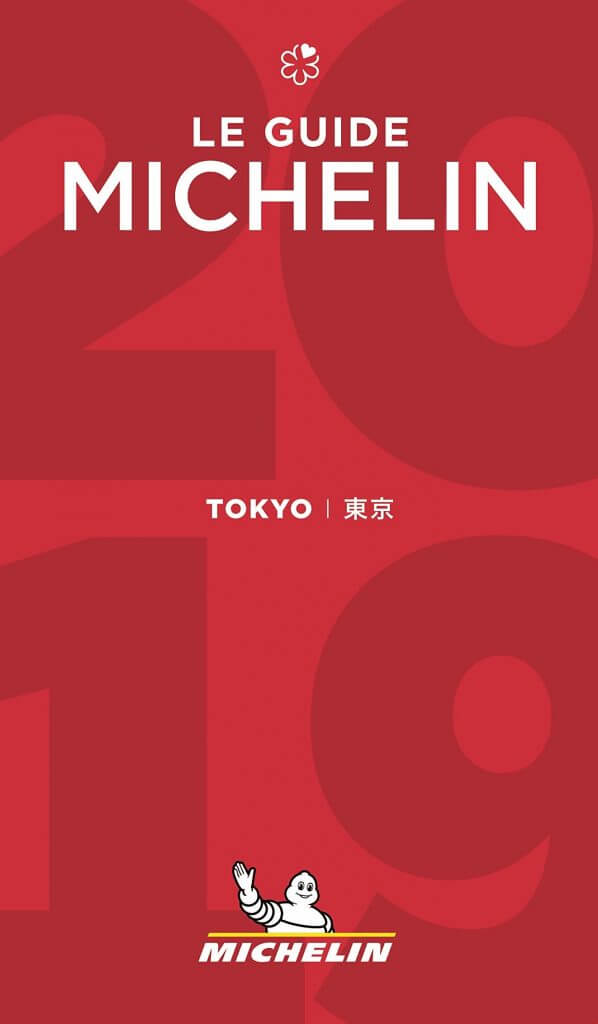 The other day I had a very interesting guest at Sushi University from America. We’d like to introduce them to you. It was their first time in Japan and they stayed in Tokyo for a week. They planned to see Asakusa, the Shibuya scramble crossing, Meiji Shrine, the robot restaurant and all the other usual tourist sites. However, the conversation all seemed to be focused on food.
The other day I had a very interesting guest at Sushi University from America. We’d like to introduce them to you. It was their first time in Japan and they stayed in Tokyo for a week. They planned to see Asakusa, the Shibuya scramble crossing, Meiji Shrine, the robot restaurant and all the other usual tourist sites. However, the conversation all seemed to be focused on food.
I asked what they planned to eat. They answered that they would be going to restaurants like Tsunahachi (Tempura), Japanese Soba Noodles Tsuta (the first ramen restaurant in the world to be awarded a Michelin star), and Steakhouse Sato. They had already lined up early in the morning at the Sugamo ramen restaurant, Tsuta, to collect a numbered ticket apparently.
The thing that surprised us most is that they were going to Sukiyabashi Jiro the day after their Sushi University experience.
If you are visiting Japan, I hope that you too will come to Sushi University before going to an expensive Michelin Star restaurant, so you can learn a bit about Edo style sushi. The reason is that sushi masters are just humans who want to provide something delicious to customers who will understand their sushi. For example, just slightly different parts of tuna have a totally different tastes. In order to understand these kinds of details for your chef, you need to have some knowledge of sushi toppings and Edomae-style sushi.
If you like sushi, you can’t continue to only judge the toppings on freshness and the fat content. Even if you don’t speak Japanese, with repetition, I hope you will reach a level that you can meet the challenges set forth by the sushi chef (understanding the Edomae-style techniques that have gone into each piece).
On the other hand, there is nothing wrong with a special trip to visit a restaurant with a Michelin star as part of your vacation so you can boast about it with your friends. We have also visited Paris’s Guy Savoy and Florence’s Enoteca Pinchiorri, and treasure those memories myself.
Returning the conversation to the American guest, they did already have impressive knowledge about sushi. Even their sushi chef was impressed at their knowledge. They had also done their own research and were talking about Ginza’s Sawada (two Michelin stars) and SUSHI BAR YASUDA. On top of that, they had come to Sushi University to test their skills and took that knowledge to Sukiyabashi Jiro. In the major American cities, there are a wide range of omakase sushi courses that cost over $500, at which they had eaten many times and had negative comments.
They didn’t want California Rolls, they had an interest in traditional Edomae sushi.
Perhaps they were sushi connoisseurs.
If so, that’s perfectly fine. You can find sushi delicious even if you don’t have the knowledge. But with each learning experience you will enjoy the sushi even more. I hope it helps in improving your experience, even if it’s just a little bit.
[sc_apply url=”https://sushiuniversity.jp/apply/”]
We hope this information will be helpful.

Revision date: July 19, 2022
Share this article
Reevaluating the serious risk to health posed by farmed salmon!
Before continuing, please read the exclusive articles in major media and research papers.
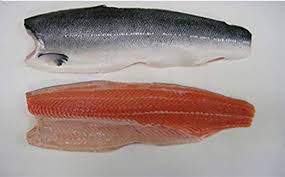 The red tide (algal bloom) frequently occurs off the coast of Chile and it is resulting a large amount of salmon deaths. In 2015 27 million salmon died in a mass event, of which 25,000 tons were powdered and then fed to the healthy salmon (according to the UK’s Guardian reports).
The red tide (algal bloom) frequently occurs off the coast of Chile and it is resulting a large amount of salmon deaths. In 2015 27 million salmon died in a mass event, of which 25,000 tons were powdered and then fed to the healthy salmon (according to the UK’s Guardian reports).
Chilean fish farmers are using large quantities of antibiotics to control fish diseases. They use 500-700 times more antibiotics than Norway does. 80% of antibiotics imported into Chile are intended for the fish farming industry. Faced with the risk of bacteria resistant to antibiotics emerging, as highlighted by the World Health Organization (WHO), the Chilean National Fish Service is calling for a reduction in the use of antibiotics. (Extract from Le Monde diplomatique Japanese edition)
The bright color of salmon is something that you would never see a long time ago, but is now commonplace. It is likely due to the Canthaxanthin pigment mixed into their feed. Salmon is in fact a white fish. The salmon that is caught in Japan is called “Shirozake” or white salmon and its flesh is not a pink before it goes out to sea. Once it is out at sea, it swims around consuming small plankton and crustaceans such as shrimp and krill. Its body then takes on a pink color due to the intake of natural coloring of Astaxanthin. This Astaxanthin has antioxidant effects and it is noted for playing a part in relieving fatigue and preventing aging. However, the synthetic pigmentation that creates the salmon pink does not provide the same health benefits.
The US Food and Drug Administration (FDA) gave approval for genetically modified salmon on November 19th, 2015. This genetically modified salmon is called “AquAdvantage salmon.” It grows faster than regular salmon and its body length is almost double. There are groups opposing the sale of this salmon, including US citizen group Center for Food Safety, the Japanese Seikatsu Club, and the European parliament. There are still many unknowns regarding the safety of this type of fish for human consumption, and a number of issues are still being debated. The discussion has been featured in “Nature” magazine.
Endosulfan is a type of organochlorine compound, like Dichloro Diphenyl Trichloroethane, Dicofol, Heptachlor, Chlordane, Mirex, Pentachlorophenol, and is known to be extremely toxic, but the EU approved Endosulfan for use as feed in Norway’s salmon farming industry in 2013.
Researchers analyzed the risk-benefit ratio based on levels of contaminants like dioxins, PCBs and chlorinated pesticides versus omega-3 fatty acid levels. While farmed salmon is higher in omega-3s, it is also significantly higher in these toxins (about 10 times) which can produce birth defects, lower IQ, and cause cancer. They determined the following based on origin of the salmon: “consumers should not eat farmed fish from Scotland, Norway and eastern Canada more than three times a year; farmed fish from Maine, western Canada and Washington state no more than three to six times a year; and farmed fish from Chile no more than about six times a year. Wild chum salmon can be consumed safely as often as once a week, pink salmon, Sockeye and Coho about twice a month and Chinook just under once a month.” (Extract from The Journal of Nutrition)
There is a saying, where there’s smoke, there’s fire. It is unlikely that big media outlet and research organizations would join forces to circulate incorrect information. Furthermore, this is not a problem that only affects certain countries like Chile or Norway. It should be considered as a problem for the entire farmed salmon industry.
On the other side of the debate, there are articles such as the following. Norway’s NIFES (National Institute of Nutrition and Seafood Research) sampled 13,180 farmed fish (of which 90% were salmon) and monitored them for medicines, substances that are prohibited by law, and other pollutants, publishing their report on August 17th 2015. In their latest report, it concluded that Norwegian farmed fish were safe and that illegal and undesirable substances were not observed to exceed standards. Further, it seems that they have confirmed decrease in most of the pollutants analyzed in the investigation.
But the fact is that, according to these articles, while the chemicals did not exceed standard values, they were certainly found to be present in farmed salmon. The other extreme would be to say that eating natural un-farmed salmon will not expose you to the potential risks from these types of chemicals.
However, that’s not really practical. The global production of farmed salmon is 2.5 million tons a year, approximately three times the 800,000 tons of naturally fished salmon. No matter what way you slice it, the option of farmed salmon isn’t going away anytime soon.
[sc_apply url=”https://sushiuniversity.jp/apply/”]
Related contents:
Taste of Home: Can I Eat Raw Salmon?
The Right Kind of Fishy: Can I Eat Raw Salmon?
This Corner Brook sushi chef says he can’t feel good serving farmed salmon to customers
Is It Safe To Eat Salmon Skin?
We hope this information will be helpful.

Revision date: February 27, 2024
Share this article
What is Red Snapper the same as “Tai” (Sea Bream)?
In the United States, Sea Bream is often called a Red Snapper. However, strictly speaking, this is not correct.
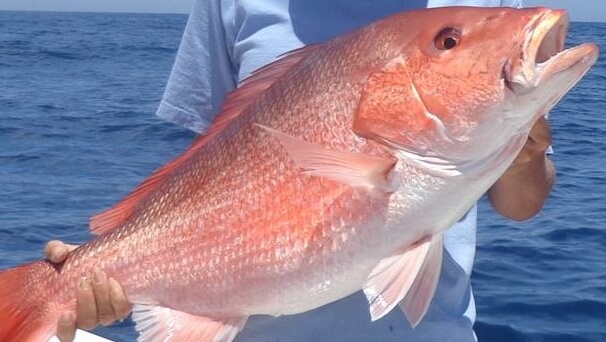 Biologically, Snapper is a generic term for all species in the snapper family (Lutjanidae). Over 100 different species of snapper inhabit tropical coastal waters. Red snapper is mainly fished in the Gulf of Mexico.
Biologically, Snapper is a generic term for all species in the snapper family (Lutjanidae). Over 100 different species of snapper inhabit tropical coastal waters. Red snapper is mainly fished in the Gulf of Mexico.
They are called American red snapper or Northern red snapper in supermarkets. The scientific name is Lutjanus campechanus.
And there is another species of fish called the Red Snapper. The Australasian snapper or silver seabream (Japanese name is Goushu-madai) is a species of porgie found in the coastal waters of Australia, Philippines, Indonesia, Taiwan, and New Zealand. It is a close relative of the Japanese Tai and similar in shape, but the body color of this species is golden pink, with a lighter reddish tinge than Tai, and the blue spots are lighter in color and somewhat larger. The flesh is softer than that of the Madai because it has passed the rigor mortis stage before being imported to Japan. It has a light flavor that can only be found in natural products. The black capillaries on the flesh are noticeable, which may bother some people. Its scientific name is Chrysophrys auratus (Forster, 1801).
So, what is the fish that Japanese sushi restaurants call “Tai”?
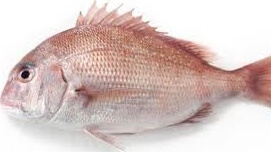 They say there are over 300 different species of fish with “Tai” in the name, making up 10% of Japan’s fish. When we say “Tai” in Japanese, we are referring to “madai” or red sea bream. Red sea-bream is categorized in the “madai” family (Sparidae).
They say there are over 300 different species of fish with “Tai” in the name, making up 10% of Japan’s fish. When we say “Tai” in Japanese, we are referring to “madai” or red sea bream. Red sea-bream is categorized in the “madai” family (Sparidae).
Incidentally, relatives of the sea bream often served at sushi restaurants include red sea bream (madai), crimson sea bream (chidai) and yellowback sea bream (kidai). While “kinmedai” (Splendid alfonsino) and “amadai” (horsehead tilefish) have the name “tai/dai” in them, they are not part of the same family as “tai”. Splendid alfonsino is a type of deep-sea fish.
In American supermarkets, Porgy (Stenotomus chrysops) is sold, which has a beautiful cherry color and looks like Tai itself. However, the taste is different from that of Tai, being softer and lighter in flesh. Around New York and New Jersey, it is called Porgy, and in Massachusetts, it is called Scup. It is native to the Atlantic Ocean.
Red sea bream and red snapper look similar, but when served as sushi, their texture and flavors are entirely different. So if you come to Japan, please try and eat natural madai. There is no “zatsumi” (overpowering bitterness) and it has a slight sweetness to it. This is the taste of tai, known as the king of the white fish. Just for your own reference.
[sc_apply url=”https://sushiuniversity.jp/apply/”]
Related Contents:
Red seabream (Tai)
CLASSIFICATION OF NIGIRI SUSHI
We hope this information will be helpful.

Revision date: June 8, 2044
Share this article
Why do we use the counter “kan (貫)” for sushi?
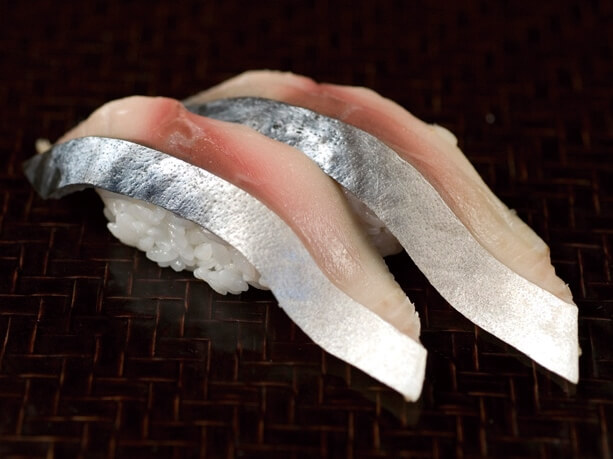 When you sit at the counter and order nigiri a la carte, they will come out in pairs.* There is nothing wrong with counting these in the regular Japanese way “ikko (一個),” “niko (二個).”
When you sit at the counter and order nigiri a la carte, they will come out in pairs.* There is nothing wrong with counting these in the regular Japanese way “ikko (一個),” “niko (二個).”
*It is said that nigiri-sushi in the Edo period was bigger than it is today, and too big to eat in one bite. In the Meiji period, the custom emerged of splitting this one big portion into two to make more easily consumed portions, and this is why it is common to get sushi in sets of two. However, nowadays making one piece of nigiri-sushi at a time is not very efficient. We think it’s actually easier for the sushi restaurant to make them in sets of two. Of course, you can order them one by one.
But the sushi restaurant won’t count them like that. Formally, sushi is counted in this way: Ikkan (one piece), Nikan (two pieces).
We have absolutely no idea where the custom of using the “kan” counter came from. It’s also not clear when use of that counter for sushi started.
Of course, there are theories. For example, there is a theory that back at a time when a single unit of money was called “kan.” The price for one piece of sushi was around 1 ‘kan’, and the counting method gained popularity.
Let me explain in more detail. The term “kan” originally referred to a unit of weight, with 1 kan equaling approximately 3.75 kilograms. It was also used as a unit of currency, with 1,000 mon coins being called “1 kanmon.” During the Edo period, sushi was sold at stalls, and the price per piece was expressed as ‘mon’ or “kanmon.” It is believed that this price unit was later repurposed as a unit of quantity.
Incidentally, when sushi first appeared, most sushi restaurants were food stalls, and the price ranged from 4 mon (120 yen in current currency) to 8 mon (240 yen) per piece. The most expensive topping at the time, otoro, did not suit the tastes of the people and was discarded, while omelette (tamagoyaki) at 16 mon (480 yen) were the most expensive topping.
There is another theory that one sushi roll was counted with the counter for roll “巻” (also pronounced “kan”), then a different kanji was used for it later. However, these are just theories that were created after the fact and the mystery remains unsolved.
In addition, sushi restaurants are a world where the culture of craftsmanship remains strong, and there is a background of using specialized terminology to maintain formality and tradition. Rather than using terms such as “1 plate (hito sara)” or “1 piece (ikko),” using the term ‘1 kan’ gives a more “chic (粋)” impression and is said to embody the tradition and aesthetic sense of sushi culture. However, this is the reason why it is still used today.
Even if you ask the owner of a sushi restaurant, they’ll probably cock their head to one side, think for a moment, and tell you that the “kan” mystery may never be solved.
Sushi rolls wrapped in seaweed rolls are counted in units of 本 (hon/bon/pon) in the wrapped state, and when cut with a knife, the units change to 切れ (kire). While these units are fairly straight-forward for Japanese language speakers and easy to understand, only the enigmatic 貫 (kan) remains a mystery.
We hope this information will be helpful.

Revision date: June 18, 2025
Share this article
Do you know that there are rankings for Negitoro?
 First, what do you imagine when you hear the word “negitoro”?
First, what do you imagine when you hear the word “negitoro”?
Most people probably think of “Negitoro Gunkan” or “Negitoro Roll” served at sushi restaurants.
But the real “negitoro” does not have leeks!
The original name for negitoro was negitoru. It translates to chip away in Japanese. The name eventually evolved to negitoro.
Here we come to the point.
The original negitoro is made from medium fatty tuna or nakaochi* chopped up finely with a knife and then mixed with chopped green onions on top. But the tuna may be switched out with filler, leading to a variety in quality of the negitoro available.
 First of all, the lowest in the ranking are the offcuts of tuna that can’t be made into sashimi (mainly Yellowfin or Albacore tuna) and this is mixed with vegetable oil and minced. The type of onion used is normally green onions. You can pick this type out because it will be whitish in color. This version is normally served at conveyor belt sushi.
First of all, the lowest in the ranking are the offcuts of tuna that can’t be made into sashimi (mainly Yellowfin or Albacore tuna) and this is mixed with vegetable oil and minced. The type of onion used is normally green onions. You can pick this type out because it will be whitish in color. This version is normally served at conveyor belt sushi.
The medium quality uses the nakaochi of cheap Albacore tuna or Swordfish.
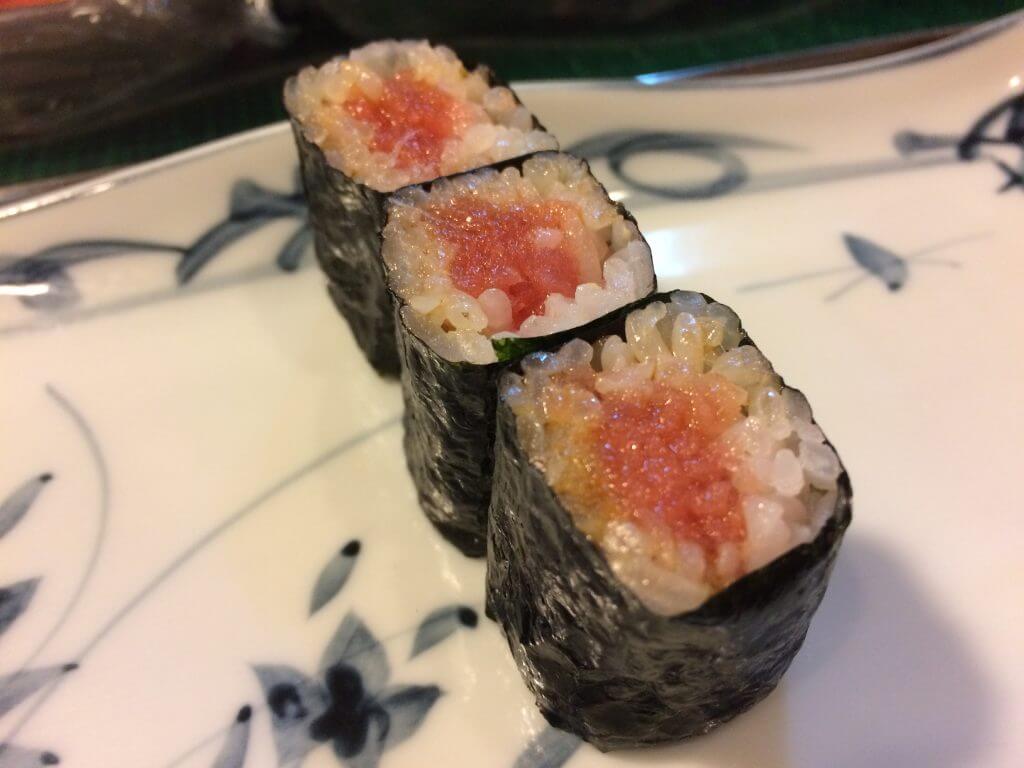 High quality negitoro uses the nakaochi of Pacific bluefin tuna or Southern bluefin tuna. Sometimes the green onion shoots are then rolled up inside. If you have a chance to try negitoro in Japan, we recommend you try the top quality options without a doubt. One piece will probably cost around $15 USD. But that’s the price for the real thing!
High quality negitoro uses the nakaochi of Pacific bluefin tuna or Southern bluefin tuna. Sometimes the green onion shoots are then rolled up inside. If you have a chance to try negitoro in Japan, we recommend you try the top quality options without a doubt. One piece will probably cost around $15 USD. But that’s the price for the real thing!
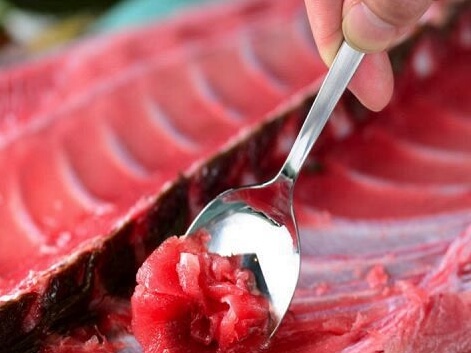
Finally, let me introduce some negitoro trivia. There is a lot of flesh on the middle bone (spine) and the surrounding area for tuna and the like. This is called “nakaochi*”. Scraping the meat from this area surrounding the spine is known as “negitoru”, which is where the word “negitoro” comes from. In other words, the name “negitoro” is not actually from the words onion (negi) and tuna belly (toro).
What is negitoro like at Sushi restaurants?
Originally, the meat from the middle cut or in between the bones of the tuna was used for negitoro. In order to get meat from these parts, the chef would have to purchase an entire tuna, or buy the cut that includes the mid-ribs. However, both of these purchases are difficult for a single sushi restaurant, so now the chef chops the meat from the body with a butcher knife until it forms a paste that is sticky and smooth from the fat in the tuna. This paste is used for negitoro.
[sc_apply url=”https://sushiuniversity.jp/apply/”]
We hope this information will be helpful.

Revision date: July 30, 2022
Share this article
What is Kakushiaji?
In Japanese cuisine (Including Edomae sushi), subtlety is often the key to perfection. One such subtle yet powerful technique is kakushiaji, or “hidden flavoring”—an approach that may seem minor, but can make a significant difference in the final taste of a dish.
Kakushiaji refers to a technique where a single seasoning (For example, sugar, vinegar, soy sauce, salt, etc.) is added to a dish. The Kakushiaji contrasts with the finished dish’s flavor, and is added in an amount too small to notice when served. This produces a clear improvement in flavor.
Examples include adding a little salt to heighten sweetness, or adding a little vinegar to a simmered dish. Sometimes these combination of flavors can be quite surprising, like adding a touch of chocolate to a curry.
In its narrower sense, kakushiaji refers specifically to seasonings or spices that please the palate or the nose. However, in a broader interpretation, it encompasses all the nuanced techniques and invisible efforts that contribute to the deliciousness of a dish. This includes selecting quality ingredients, using seasonal produce, applying seasonings at the right time and in the right way, choosing appropriate tableware, and ensuring a beautiful presentation.
In essence, kakushiaji is not just about taste—it reflects the spirit of craftsmanship and attention to detail that defines Japanese cooking. It is the hidden touch that turns ordinary food into an extraordinary experience.
A list of Kakushiaji
- soy sauce
- miso
- dashi
- ketchup
- Worcester sauce
- mustard
- sake
- mayo
- mirin
- chocolate
- coffee
- cocoa powder
- honey
- spices (nutmeg, all spice, garam masala, cinnamon, cardamom, etc)
- brown butter
- chili oil
- shio koji
- amazake
- yogurt
- caramelized onions
- sugar
- cream cheese
Related contents:
What is a firm difference between sushi and western fish cuisine?
We hope this information will be helpful.

Revision date: July 5, 2025
Share this article
What is Umami?
Umami describes the delicious taste of savory flavor essences. For many years, people held to the belief that humans can taste only four basic flavors (sweet, sour, salty, bitter) until a Japanese chemist named Kikunae Ikeda discovered a fifth flavor (glutamic acid) in the early 20th century.
The main umami ingredients are glutamic acid in seaweed, inosinic acid in dried bonito and meats, succinic acid in shellfish, guanylic acid in shiitake mushroom.
Many ingredients contain a wide variety of umami essences. In combination, they create a synergistic effect that produces an even more potent savory flavor.
[sc_apply url=”https://sushiuniversity.jp/apply/”]
We hope this information will be helpful.

Revision date: July 9, 2025
Share this article
Automatic reply mails from Sushi University
The reply from the reservation system is based on the application by the guests autocratically. The original information of your reservation cannot be updated by our system. If there is a change, the new information will not be reflected in the following 4 automatic reply mails.
[Automatic reply mails from Sushi University]
1.The thank you mail to inform you the acceptance for your application
2.The mail to confirm your reservation
3.The mail to reconfirm your reservation : will be delivered the day before Sushi University
4.(only if) The mail to inform you the acceptance for your cancel
We hope this information will be helpful.

Revision date: October 15, 2018
Is the handmade ginger in quality sushi restaurants free?
The ginger served in sushi restaurants is called “gari”. Some people eat it endlessly, thinking that it’s free no matter how much they eat.
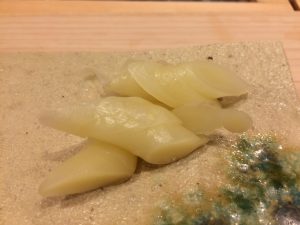 However, at high-end or traditional sushi restaurants where artisanal gari is made in-house, it may be included in the bill. This is because crafting delicious, high-quality gari requires considerable time, skill, and labor, and the cost of fresh, domestic ingredients can be so high that serving it for free would result in a financial loss.
However, at high-end or traditional sushi restaurants where artisanal gari is made in-house, it may be included in the bill. This is because crafting delicious, high-quality gari requires considerable time, skill, and labor, and the cost of fresh, domestic ingredients can be so high that serving it for free would result in a financial loss.
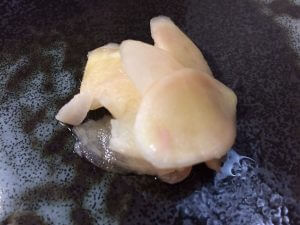
In contrast, the majority of sushi restaurants use commercially produced gari, which is mass-produced by large food processing companies, many of which have factories in China or Southeast Asia. These manufacturers typically soak large amounts of ginger in an industrial pickling solution containing salt, vinegar, acidulants, sodium saccharin, potassium sorbate, and sodium metabisulfite.
Although the quality of this mass-produced gari has improved in recent years, some versions have crushed and may be artificially colored with plum vinegar to enhance their appearance.
On the other hand, homemade gari, especially when made in Japan, is prepared with a more delicate and refined approach. It is typically seasoned with rice vinegar and salt, with sugar used sparingly to provide a gentle sweetness. The result is crisp, chewy, and flavorful, retaining the natural pale yellow color of fresh ginger without artificial coloring. During the early summer season, when young ginger (also known as shin-shoga) is harvested, the price of domestic ginger can soar to several thousand yen per kilogram. Due to its high water content, 1 kilogram of raw ginger yields only about 300 grams after squeezing.
Making high-quality, handcrafted gari is both cost-intensive and laborious, as sushi chefs often prepare a year’s supply in advance. Once made, it must be stored in a refrigerator dedicated exclusively to preserving the freshness and quality of the gari. When you consider the cost, effort, and culinary craftsmanship involved, it becomes clear that homemade gari is far more expensive and distinctive than its imported counterpart. In fact, serving authentic, house-made gari is one of the key elements that sets high-end sushi establishments apart from the rest. And even if you’re not charged for it, eating too much can dull your taste buds, affecting your appreciation of the sushi’s delicate flavors.
How to Make Gari (Pickled Ginger)
-
Slice fresh young ginger thinly.
-
Place the slices in boiling water.
-
Once the water returns to a boil, remove the ginger.
-
Drain the slices in a colander.
-
Spread the ginger out on a bamboo sieve (or similar) and press it firmly while still hot to remove excess moisture.
-
Soak the ginger in a seasoned vinegar mixture for half a day to a full day.
Vinegar Mixture (for 4kg of ginger):
-
3.8 liters of rice vinegar
-
1.5 kg of sugar
-
300 grams of salt
Related contents: CONDIMENTS FOR SUSHI
We hope this information will be helpful.

Revision date: June 10, 2025
Share this article
What is the difference between “鮨,” “鮓” and “寿司” (all ready “Sushi”).
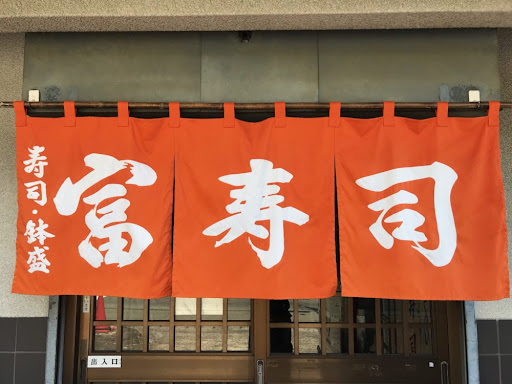
As far as we know, there are three ways “sushi” is written on sushi restaurant curtains in Japanese kanji characters: 鮨, 鮓 and 寿司.
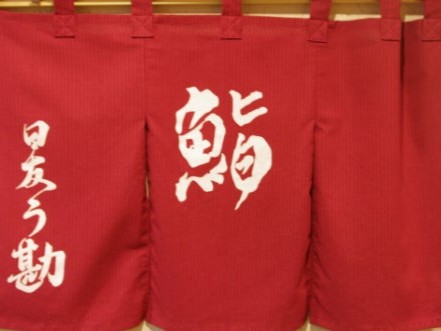
Do you know the difference? Most Japanese people don’t know the answer to this question.
This is because various spellings are used by sushi restaurants throughout Japan.
For example, in Hokkaido, “鮨” is used. Next, in Tohoku, Akita and Yamagata use “鮨,” Aomori, Iwate, and Fukushima use “すし,” and Miyagi uses “寿司.”
In Kanto, Gunma, Saitama, Tokyo, and Kanagawa use “鮨,” Ibaraki and Chiba use “すし,” and Tochigi uses “寿司.” The spellings vary by prefecture.
Incidentally, among the 42 prefectures (excluding Nara, Wakayama, Kochi, Saga, and Okinawa), the most common spelling is “鮨” with 20, followed by “すし” with 17, ‘寿司’ with 4, and “鮓” with 1.
Broadly, in the Kanto area 鮨 is generally used while 鮓 is more common in Kansai. 寿司 is used commonly everywhere in Japan.
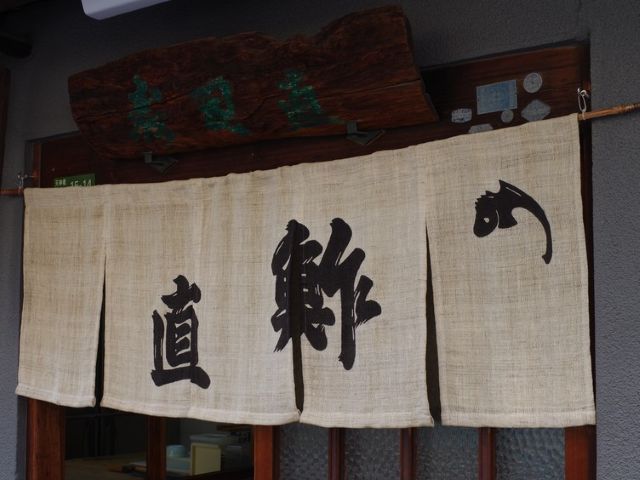
On the other hand, of the three, only 鮨 and 鮓 are seen in ancient Chinese literature. 鮨 was seen as a dictionary entry as early as the 5th to 3rd centuries B.C., and it’s origin is described as combining “fish” and “shiokara” (briny flavor) resulting in the term 鮨.
On the other hand, in A.D. 1st to 2nd century dictionaries, “鮓” appeared, and is explained to depict “a storage container for fish.” Toward the end of the second century 鮓 was used for the term “narezushi”.
But around the third century, the briny meaning of 鮨 and the term “narezushi*” written as 鮓 started to be used interchangeably. That is how the words were imported to Japan.
In Japan, the character “鮓” was often used in literature from the end of the Heian era to the end of the Edo era. Eventually the use of “鮨” was revived during the Meiji era (for unknown reasons). It was a natural transition that Kanto came to use “鮨” and Kansai came to use “鮓”.
Incidentally, the kanji “寿司” was created from the phonetics. Its use for celebratory occasions became commonplace throughout Japan.
*”Narezushi (熟れ寿司)” is the primitive version of Japanese sushi. It means covering seafood with salt and then soaking in rice for a few years as a form of lactic acid fermentation, which brings out the acidity.
We hope this information will be helpful.

Revision date: May 31, 2025
Share this article
Assessing Fish at the fish market!
One important task of sushi chefs is going to Tsukiji (Toyosu) every morning, looking at fish with their own eyes and assessing the quality. Having a good eye is important in order to get the highest quality possible, but this is cultivated by experience. They are also constantly obtaining information from the fishmongers at the market regarding what the best fish of the season and their localities. It’s almost a game as to whether they can get high-quality fish at the optimum price everyday. The skills of a sushi chef start with this assessment.
[sc_apply url=”https://sushiuniversity.jp/apply/”]
We hope this information will be helpful.

Revision date: September 11, 2018
Share this article
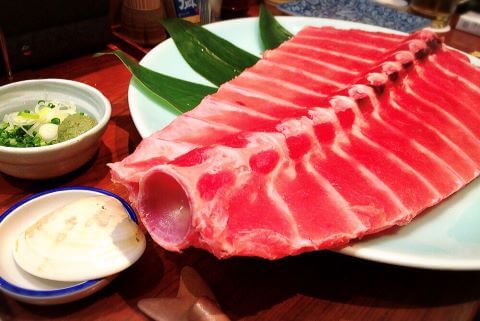 First, what do you imagine when you hear the word “negitoro”?
First, what do you imagine when you hear the word “negitoro”?